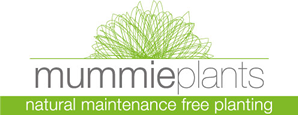Did you know? More than half of all known living organisms are insects. Just as well they usually keep to themselves, staying “outside where they belong”. But Summer can change this. At the same time as insect numbers boom and competition for outdoor food sources increases we throw open our doors and windows. Some insects buzz in unwittingly. Others worm their way in purposefully. Many will make a beeline for the sanctity of your office plants.
Ordinary office plants are the ultimate home for insects, providing shelter, nutrients and water. Plants even act as a sort of information superhighway for many of the critters. Researchers at the Netherlands Institute of Ecology (NIOO-KNAW) and University Waningen have proof that gangs of leaf-and-root-eating insects send chemical signals through the leaves to indicate their occupation of the plant and warn others off.
When insects move in they become pests. There is something about insects indoors that causes the average person’s skin to crawl. We are highly averse to the sight of them in our living space, on our desks, in our drawers and cupboards. And they tend to multiply, colonising new areas of their new habitats day on day. They don’t do your office plants any good, either. Yellowing, mottled, brittle or curved leaves are signs that pests have taken up residence and are draining away your plants’ sap and water. Office pests really are a nuisance.
The Main Culprits
– Fruit Flies feed on yeasts present on ripe fruits and vegetables, food scraps, and sugary liquids.
– Fungus Gnats are tiny, midge-like bugs. They are apt to buzz around your face and computer screen as you are trying to work.
– Pantry Pests include beetles and moths and love leftover snacks.
– Ants come indoors to find shade and food, especially during summer when external sources dry up.
So what do I do if my office becomes overrun with bugs? Throw out all the plants? Fortunately, there are less drastic measures. They WILL require time and dilligence but there is a strong chance they will work.
Insects often stow-away on new plants that are being delivered to a building. Or, on small house plants that people might bring in to liven up their desk. It is sound policy to always isolate any new plant you introduce to your interior and monitor it for the presence of pests for a period of time.
Fungus gnats are attracted by overwatered plants. If you have an infestation, localise the plants that are causing it. Let the soil dry out a bit. Make sure that the plant has adequate drainage; if it doesn’t, repot it in a better pot and include some pea gravel in the dirt.
Pantry pests lay their eggs in nuts, cereals, crackers and chocolate. Outbreaks are caused by leaving remnants of these foods or unsealed packs of snacks in desks drawers or cupboards. Outbreaks can be eradicated by encouraging your staff to bin unfinished food immediately.
Ants are a particularly unwanted guest. They actually ‘farm’ other pests and encourage them to flourish. They protect honeydew-producing insects such as aphids, soft scales, whiteflies, and mealybugs, increasing damage from these pests. Ants can easily enter a building through tiny openings. Ripening or rotten sweet fruit will really egg them on. You can stop your plants becoming safe havens for ants by banding stems and trunks with sticky substances such as Tanglefoot. Or by removing affected pots from the building and submerging them in a solution of insecticidal soap and water.
Or, you can resort to spraying your plants with insecticides. This presents a whole other set of health-related issues (more about which in a future post).
Or, if you want to save yourself all this botanical effort and expense you can use Mummie Plants. Mummie Plants are living plants that have been preserved. They no longer need roots. Their sap has been removed. They offer no water or food for pests meaning insects do not feel welcome. Preserved plants present insect families with two choices: expire quickly or move out.
So, if you want a bug-free building full of vibrant vegetation Mummie Plants are the people to talk to. Call us now on 01 296 4540.
